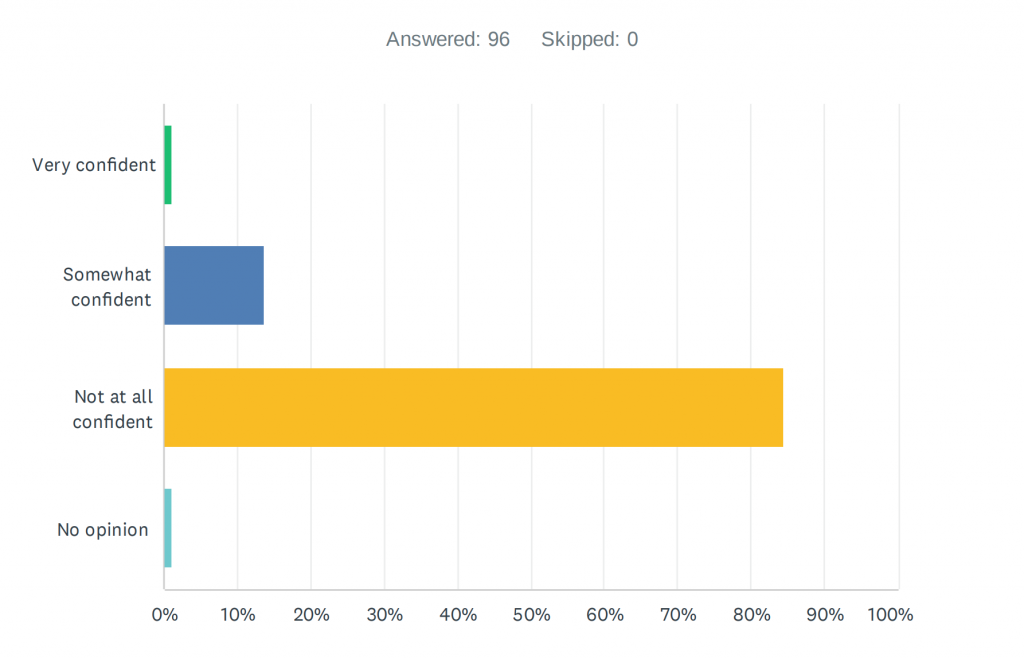
The Trouble with Maricopa
A Maricopa County voter investigates
There is a lot of confusion over what is happening and what has been happening in Maricopa county, Arizona. Most people seem not to know the election laws and procedures here and assume that they are the same as they are in their state, or the same as they were in 2016. They also think that a lot of what they hear is made up or lies meant to sow discord. I live in Maricopa. In fact, I’ve lived here most of my life, as I was born here. I am registered to vote here. I do vote here, so let me tell you about our election laws, the reality of election day, and the response from our various governmental offices.
The rules
First off, the Elections Procedures Manual (EPM) was updated on December 20, 2019 and can be found under the Legal Resources section of the Secretary of State page. Anyone can register for early voting per A.R.S. § 16-542. These ballots are sent to voters in yellow envelopes than contain instructions and a blue envelope for signature and return. The ballot itself says that it must be filled out with a black ballpoint pen while the instructions say that a black or blue ballpoint pen can be used. I know because I’ve had both in hand. Voters can also take their early ballot into any polling location on election day per A.R.S. §§ 16-547(C); 16-551(C). I know of no further instructions from law about how those ballots are to be turned in; however, poll workers at one location told me they could be dropped in box three or voters could use their early ballot as a guide to fill out a printed ballot received upon check-in for a tabulation machine to count, since folded early ballots could not go through the tabulator. I was also told that I should spoil my early ballot (i.e. do it myself) and that I could either give that ballot to poll workers to destroy or I could take it home and destroy it myself. I opted for the latter but no one at the voting location checked to make sure I spoiled it.
Voters in Maricopa are also able to vote at any location per the Maricopa County Elections Department. In-person voters are checked in on a computer program called SiteBook. Voters show photo ID, confirm information, and a letter with their current address if the address on their photo ID does not match what they are registered under. SiteBook counts as a digital signature. Voters on election day were given a provisional ballot if they were shown to be checked in at previous locations, and this was confirmed with communications I had on Twitter with the official Maricopa County Recorder’s Office even though nothing official I found on Maricopa County websites showed this was a valid reason to give a voter a provisional ballot. Strangely, it says that voters should receive a provisional ballot if they received an early ballot and must surrender their early ballot for spoilage. Obviously, this did not happen in my case. I also found nothing in the EPM about checking voters out if they needed to go to a new location. The Maricopa County Training Manual: Poll Workers file (marked “final”) had several sections on how to check voters in and nothing about checking voters out. The EPM did state that provisional ballots are not counted if the voter’s signature is shown on any other signature roster, meaning if a voter was checked in to a location, left without voting and without being checked out of SiteBook, they were given a provisional ballot and that ballot was not counted.
November 8th: the chaos
Maricopa County offices published tweets, video, and press conferences because tabulators were not working at several locations. It is unclear how many locations were problematic, but Mark Sonnenklar, an RNC Election Integrity roving attorney, wrote a public letter to Arizona Republican party officials and candidates consolidating the findings of ten roving attorneys and his own showing that 72 out of 223 vote centers were having issues with their tabulators. Arizona law prohibits video or photography in vote centers (A.R.S. § 16-515(G)-(H); A.R.S. § 16-1018(4)), a law, by the way, I disagree with stringently. I saw that there were issues before I went to a voting location. I specifically went to a voting location that the county website did not show was a problem and was not in a traditionally red district. My location was very calm and I was able to vote reasonably quickly and with little fuss, but obviously even in my experience there are discrepancies between what is policy and law, and what was reality. By the EPM, I should have been given a provisional ballot. It was my intention to run my early ballot through the machine, but I was told I could not. The Poll Worker training manual did give contrary instruction saying that early ballot receivers could still vote if that ballot was not received and counted by the county. On the section for spoiling a ballot, it also did not state how to check out a voter, only how to mark their previously printed ballot as spoiled. So with confirmation that there were issues at locations, the poll workers being untrained on how to check out voters, and provisional ballots legally not allowed to be counted for multiple signatures, a not insignificant number of people missed out on having their votes counted. Knowing how many provisional ballots were received versus how many were counted would be informative. That doesn’t take into account, though, those people who left a voting location before check-in and never returned because of the inordinately long wait times to vote.
Let me make one thing perfectly clear: I do not care who these people were going to vote for. I care that they weren’t able to vote or that their votes did not count. The facts that poll workers did not know how or even that they needed to check voters out if they wanted to go to a new location and that there were multiple locations with tabulator failures means this election should be redone. I don’t care if every single one of those people were going to vote for the worst human on earth. Their votes should have been cast and counted on election day. We cannot hear constantly that our “democracy is dying” and then sweep disenfranchised voters under the rug. The two concepts being acceptable show both cognitive dissonance and a lack of principles.
The aftermath
Counting of the votes took much longer than larger states, even states with both larger populations and severe weather issues such as Florida. There is a lot of media surrounding the long counting period of Arizona elections trying to pass it off as normal. Well, maybe it is normal when on election day you have a ton of problems creating more provisional ballots than a well-run election would require, but it is not normal otherwise. It wasn’t normal in 2016. We knew the results at least by the time I woke up the next morning. Not several weeks later. But as I said, the laws changed in Arizona for election procedures after 2016.

On November 19th, Arizona AG Mark Brnovich’s office sent a letter to the Maricopa County Attorney asking for printer specifications including who made what change to them, information pertaining to poll workers’ training on how to check out voters as administrated by the county, and chain of custody for the Door 3 ballots because of several sworn complaints to his office by voters, poll workers, and observers. A few days later, Election Integrity Network released the survey results for Maricopa county showing that more than 80% of poll volunteers responding felt that they were “not at all confident” that this election’s results would be accurate and honest. A few other counties in Arizona became hesitant to certify their results in the face of the evidence of disenfranchisement in Maricopa County because as the most populous county, if the results here are skewed it would skew the results of all statewide and federal elections. Upon hearing of this, Katie Hobbs’ Secretary of State office released letters to those counties stating that they were legally obligated to certify their election results and had no discretion to reject them. Bear in mind two bits of information from that sentence: the candidate for governor whom the results currently favor ran the election, and she is saying that certification of results is purely ceremonial.
Then came Maricopa county’s response to Brnovich. This letter did not provide any of the information requested, and at times refused Brnovich’s right to the information or only wrote around the requested information, such as the request for training of poll workers for checking voters out, which was not in the training manual. This was frustrating as a response to say the least. The county also released their own findings of issues that occurred on election day and their responses to those issues, including stating that poll workers had in person training on check out procedures prior to election day. This is counter to sworn complaints by both voters and poll workers. Other parts of the document have also been contested by official observers who complained to Brnovich. On November 28th, Maricopa county moved up the certification of the election and heard many complaints from poll workers, disenfranchised voters, and observers, but certified the election anyway.
There are now ongoing lawsuits from Republican candidates.
